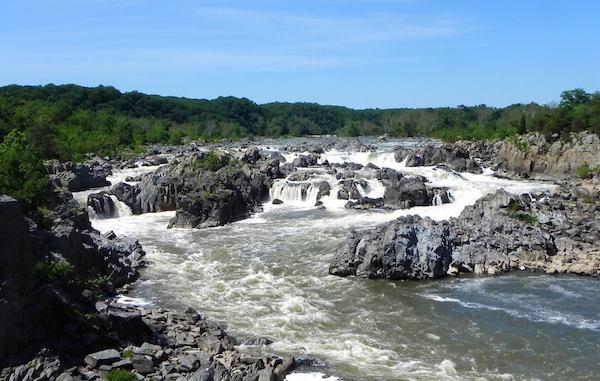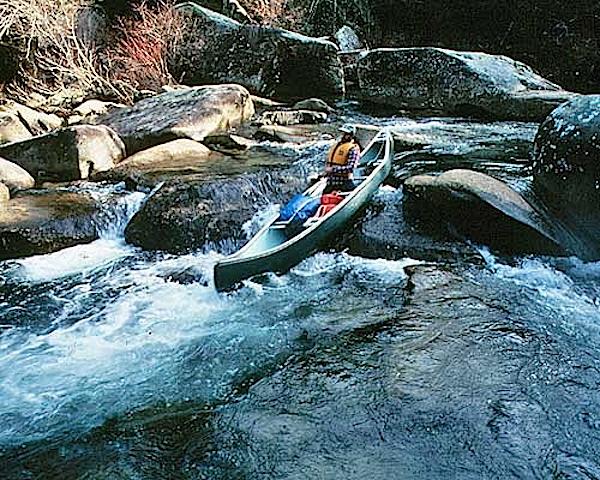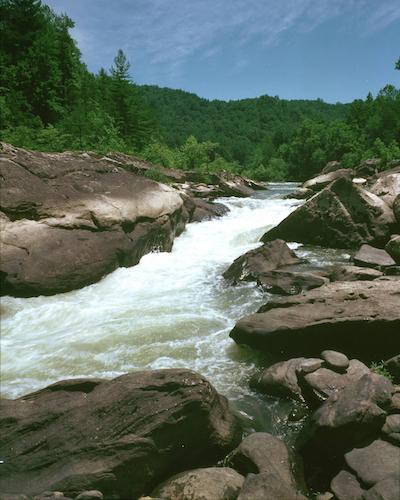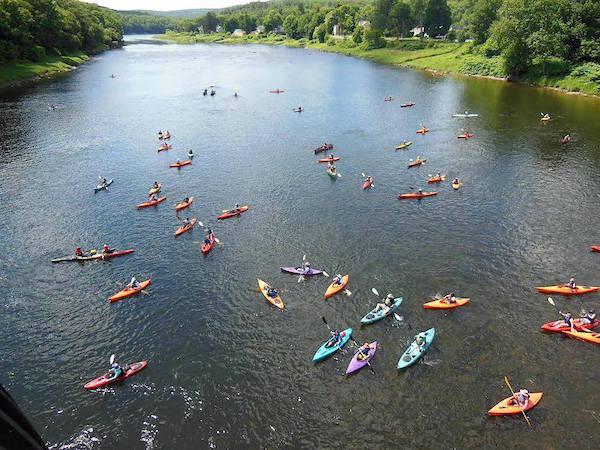
Great Falls, in the capital's backyard, tests the mettle of experienced paddlers/NPS
There are a lot of whitewater runs in the National Park System just waiting for you out there. Some for experts, others intermediates, and a few that will help a novice gain confidence.
1. Grand Canyon National Park's Colorado River, Arizona
You'll spend more time floating flat-water than crashing through giant rapids here, but the grandeur of this canyon, and the intensity of the whitewater makes this the ultimate river experience in the Lower 48...and some would say the world. Landing a private permit is a once-in- a-lifetime achievement. Spread the word through your paddling network that you're up for the challenge and you just might land an invitation.
2. Gauley River National Recreation Area, West Virginia
The season here is short, just six weekends in early fall. But this 25-mile run is plenty challenging. The fall hardwood forests make this a particularly beautiful float...if you can relax long enough to enjoy the colors. 'The upper Gauley offers tremendous class III to V+ drops in steep, turbulent chutes such as Pillow Rock, Iron Ring and Sweet's Falls, and rocky routes that demand constant maneuvering such as Lost Paddle and Shipwreck,' notes the Park Service. There are a lot of whitewater runs in the National Park System just waiting for you out there. Some for experts, others intermediates, and a few that will help a novice gain confidence.
3. Great Falls of the Potomac, Virginia
Just 15 miles from downtown Washington D.C., this raucous stretch of water is not for novice paddler. Park Service personnel point out that, 'In the last decade several drownings and multiple incidents of kayaker swims, injuries, and loss of equipment have occurred here.' Great Falls of the Potomac rapids vary from Class II (novice) to Class V+ (extreme). Some sections of the Potomac River flow next to the historic Chesapeake & Ohio Canal National Historical Park. For descriptions of the rapids, water levels for running, and for avoiding, check out American Whitewater's website.

The Wild and Scenic Obed River is an overlooked jewel/NPS
4. Obed Wild and Scenic River, Tennessee
Tennessee's Obed is one of the best kept secrets of the National Park System. The Obed Wild and Scenic River challenges even the best paddlers. The park staff notes, 'Potentially lethal hazards abound on all sections of the park's streams. Undercut rocks and rocks are piled together to form 'sieves' and fallen trees act as 'strainers.' You will frequently find these positioned immediately below difficult rapids, and if you're outside of your boat there is a chance that you may be washed into and under one of these features with incredible force. The water will pass on through the obstacle but your body may not.' It's intense, and the best paddling is during the spring runoff and fall when rains can pump up the rapids after summer's low flows.

Yes, there are flat stretches on the Chitina River, but that doesn't mean it's easy/NPS
5. Wrangell-St. Elias National Park, Alaska
If you have a thirst and time for adventure, this park is for you. Your float runs from the Nizina Glacier to the town of Chitina down glacially-fueled rivers'the Nizina, Kennecott and Chitina. All flow within the biggest national park in our system. This 90-mile run has been called 'Class III with Class V consequences.' There will be bears, too, and you'll have to filter your river water to get the glacial silt out.
6. Big South Fork National River and Recreation Area, Tennessee
The rumpled landscape of the Appalachians must have been designed by a river runner. There are twists, bends, rock mazes, and chutes along the Big South Fork of the Cumberland River, with a mix of paddling experiences. If you're a beginner make sure you choose the right section! Expert paddlers will test themselves along the 11-mile, Class III-IV, stretch from Burnt Mill Bridge to Leatherwood Ford. 'The trip begins deceptively easily, but quickly develops into serious, powerful whitewater which is challenging to even expert and advanced paddlers,' the park notes. 'Numerous sheer, massive sandstone cliffs are visible on the run. The scenic values of the gorge are of the highest order.'

Expert paddlers test themselves on Angel Falls in Big South Fork National River and Recreation Area/NPS
7. Canyonlands National Park, Utah
Cataract Canyon has been called the best two-day river run in the park system. Put-in near Moab and take-out on Lake Powell in the Glen Canyon National Recreation Area. You'll be treated to towering red-rock cliffs and 14 miles of rapid transit. The rapids are rated up to Class V, tantalizing even experienced boaters. Toss in the fact that this is one of the most remote areas of the Southwest and you have a true wilderness experience. Novices looking to experience this river might want to join Traveler's float trip with Holiday River Expeditions in late September.
8. Upper Delaware Scenic & Recreational River, New York/ Pennsylvania
You'll find more than 70 miles of free-flowing water on this section of the Delaware River. It's the longest free-flowing river in the Northeast, and has great opportunities for improvement, as you'll find everything from flat water to Class II rapids. The Upper Delaware's boating season extends from mid-April through October. The water, even in summer, can be cold enough to cause hypothermia.
9. Dinosaur National Monument, Utah/Colorado
Dinosaur is actually a two-fer: the Green and Yampa rivers. The Green is a bit more rambunctious than the Yampa, which has the scenic edge. Land a trip on the Green and you'll encounter rapids named Disaster, Hell's Half-Mile and Triplet that range up to Class III, depending on water levels. The Yampa River has Warm Springs Rapid, a hearty Class III, and sometimes higher. This rapid was formed in June 1965 by weeks of rainfall that undercut a bank causing a rockslide to block the river. After the confluence of the Green and the Yampa, paddlers encounter three more rapids of note: Moonshine, S.O.B., Schoolboy and Inglesby.
10. Olympic National Park, Washington
The newest white-water destination in the park system is still being formed. The removal of the Elwha and Glines Canyon dams on the Elwha River has revealed a short stretch of river that claims some Class II-III rapids, fed by the Olympic Mountain glaciers.

The Upper Delaware Scenic & Recreational River is a great weekend getaway for Northeastern paddlers/NPS



Add comment